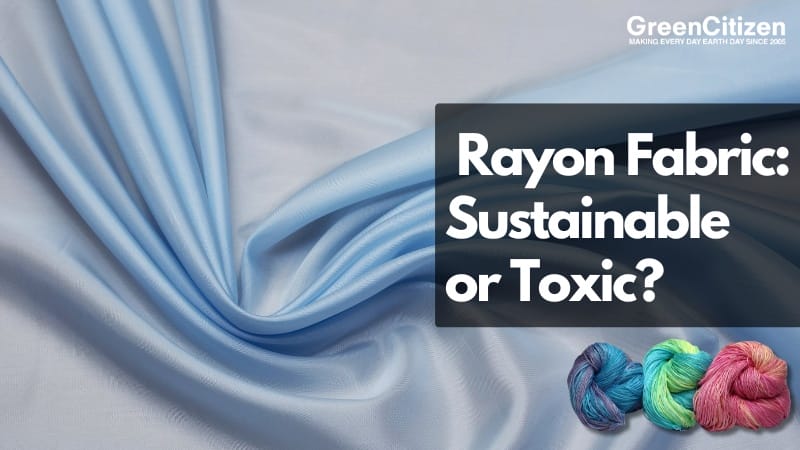Rayon fabric is a semi-synthetic, plant-based textile made by transforming wood pulp (cellulose) into soft, breathable fibers. It’s often marketed as “artificial silk” because it drapes well and feels smooth, but its environmental story is more complicated than its silky reputation.
So, is rayon fabric sustainable? Sometimes. Rayon can be lower-impact when it’s made from responsibly sourced wood and produced in a closed-loop process that captures and reuses chemicals. But conventional viscose rayon can be linked to deforestation risk, toxic chemical use, and polluted wastewater when factories and sourcing aren’t well managed.
In this guide, you’ll learn what rayon fabric is, how it’s made (viscose vs. lyocell/modal), the different types of rayon, and a practical checklist to choose rayon that’s genuinely better for people and the planet.
Key Takeaways
- Rayon is Semi-Synthetic: It is created from natural wood pulp but processed using chemicals, making it a hybrid between natural fibers (like cotton) and synthetics (like polyester).
- Not All Rayon is Green: Conventional Viscose production involves toxic solvents and can drive deforestation. For a sustainable option, look for Lyocell or Tencel™, which use eco-friendly, closed-loop systems.
- High Maintenance: While rayon mimics the luxurious feel of silk and is highly breathable, it is fragile when wet and prone to shrinking, requiring gentle washing in cold water.
What is Rayon Fabric?
💡 Quick Answer: Rayon fabric is a semi-synthetic fiber created by regenerating cellulose found in plant cell walls, usually from wood pulp. It bridges the gap between natural fibers (like cotton) and synthetics (like polyester), offering a soft, absorbent, and breathable material that mimics the feel of silk, wool, or cotton at a lower cost.
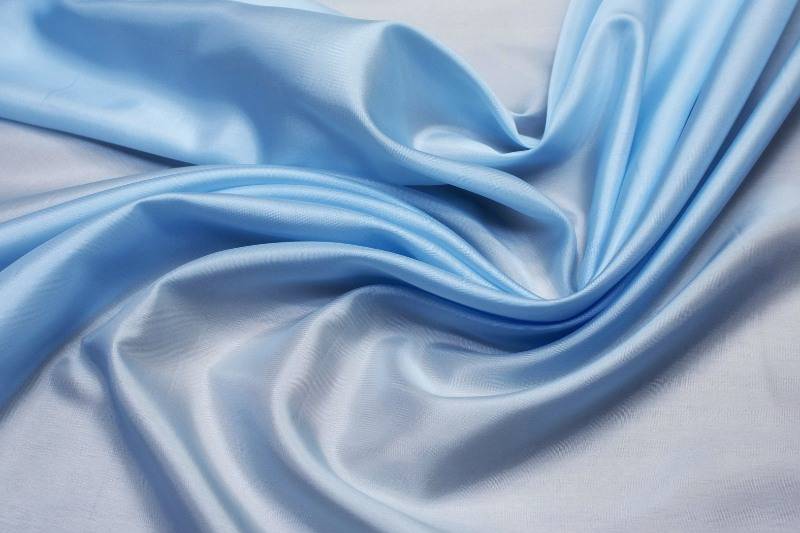
Rayon is often misunderstood. Is it natural? Is it synthetic? The answer is “semi-synthetic.”
It starts as a natural material—cellulose extracted from beech trees, pine, bamboo, or eucalyptus. However, because this cellulose must be chemically converted into a liquid and then spun into fibers, it cannot be classified as a purely natural fiber like cotton or wool.
Rayon is a shapeshifter in the textile world. Depending on how it is processed, it can imitate the texture of silk, wool, cotton, or linen. This versatility, combined with its low cost and high absorbency, makes it one of the most widely used fabrics in fast fashion and home furnishings today.
What Does Rayon Feel Like?
Rayon fabric is known for a cool touch, soft hand feel, and excellent drape. Many people choose rayon because it mimics silk’s flow and comfort at a lower price. The tradeoff is that some rayon types, especially viscose, can be weaker when wet and require gentler care.
The History of Rayon Fabric
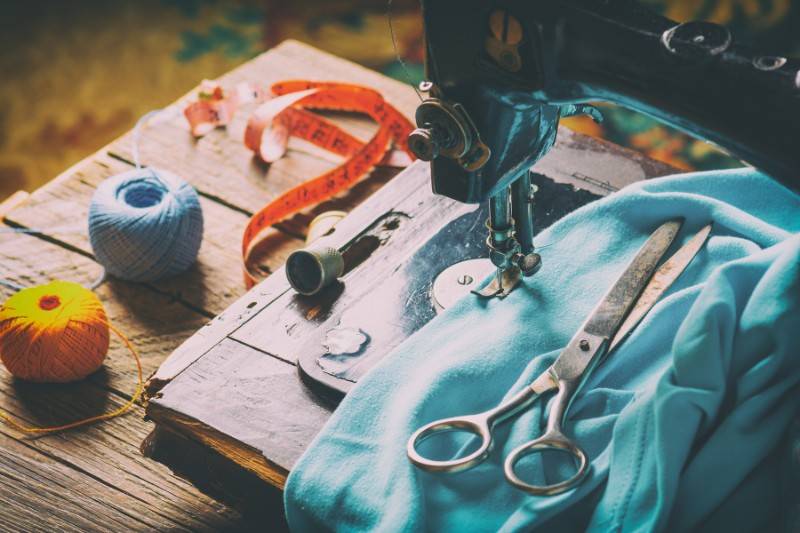
The journey of rayon began in the 1860s when the French silk industry faced a crisis due to a disease affecting silkworms. This shortage spurred the search for “artificial silk.”
In 1885, Count Hilaire de Chardonnet patented the first successful method to manufacture rayon from cellulose. For decades, it was simply known as “artificial silk.” It wasn’t until 1925 that the Federal Trade Commission (FTC) officially named it “rayon,” a term defining any man-made fiber derived from cellulose.
Since then, the fabric has evolved from the flammable early versions to the high-performance varieties we see today, such as High Wet Modulus (HWM) rayon and eco-friendly Lyocell.
How is Rayon Fabric Made?
💡 Quick Answer: Rayon is made through a multi-step chemical process: cellulose is extracted from wood pulp, treated with caustic soda, and dissolved in carbon disulfide to create a viscous solution. This solution is then extruded through a spinneret into a chemical bath, where it solidifies into regenerated cellulose fibers ready for weaving.
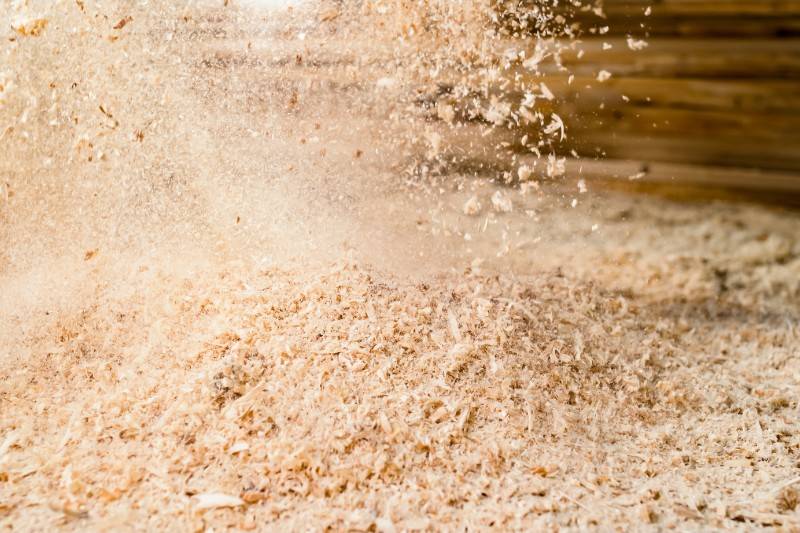
Creating rayon fabric is a fascinating manufacturing process that transforms solid wood into a fluid, silky fiber. Here is the step-by-step breakdown:
- Extracting Cellulose: Wood pulp (the raw material) is purified to extract cellulose sheets.
- Steeping & Xanthation: The sheets are soaked in sodium hydroxide (caustic soda) and then treated with carbon disulfide. This turns the cellulose into a yellow crumb known as “cellulose xanthate.”
- Dissolving: The crumbs are dissolved to create a thick, honey-like liquid called “viscose.”
- Spinning: This liquid is forced through a device called a spinneret (like a showerhead) into a sulfuric acid bath. The acid instantly resolidifies the liquid into filaments, creating regenerated cellulose fibers.
⚠️ The Environmental Concern: The chemical carbon disulfide used in this process is highly toxic. In traditional viscose production, about 50% of this chemical is released into the air or water, posing health risks to workers and damaging local ecosystems.
4 Main Types of Rayon Fabric
💡 Quick Answer: There are four primary types of rayon fabric, each with unique properties: regular Viscose Rayon (versatile but weak when wet), High Wet Modulus Rayon (stronger and durable), Cuprammonium Rayon (fine and sheer), and Lyocell/Modal (eco-friendly options produced using closed-loop systems).

1. Viscose Rayon
This is the most common form of rayon. It creates a soft, breathable fabric that drapes beautifully, making it perfect for summer dresses and blouses. However, standard viscose is fragile; it loses up to half its strength when wet and requires dry cleaning to prevent shrinking.
2. High Wet Modulus (HWM) Rayon
Engineered to be tougher, HWM rayon (often branded as Modal) is stronger when wet compared to standard viscose. It can usually be machine-washed and is often used for underwear, sheets, and towels where durability is key.
3. Lyocell (Tencel™)
Lyocell is the “green” evolution of rayon. It uses a different solvent (N-Methylmorpholine N-oxide) which is non-toxic and recyclable. It is stronger than viscose and cotton, highly absorbent, and environmentally superior.
4. Cuprammonium Rayon (Cupro)
Also known as “Bemberg” or “Ammonia Silk,” this type uses copper and ammonia to dissolve the cellulose. It results in a very fine, sheer fabric often used for linings in suits or lightweight summer garments.
Is Rayon Fabric Sustainable? (The Eco-Verdict)
💡 Quick Answer: Traditional rayon fabric (Viscose) is generally not considered sustainable due to the release of toxic chemicals like carbon disulfide and the risk of deforestation. However, modern variations like Lyocell are highly sustainable, utilizing non-toxic solvents and closed-loop manufacturing processes that recycle up to 99% of chemicals.

This is the most critical question for GreenCitizen readers. The honest answer: rayon fabric is not automatically sustainable just because it comes from trees. Sustainability depends on two big levers:
- Where the wood comes from (forest sourcing)
- How the cellulose is processed (chemical capture and wastewater treatment)
The Biggest Sustainability Concerns With Rayon
1) Deforestation and biodiversity loss
Rayon starts with wood pulp. If that wood comes from high-risk forests or poorly managed supply chains, rayon can contribute to habitat loss and biodiversity damage.
2) Chemical pollution and worker safety
Traditional viscose production can rely on hazardous chemicals. Without strict controls, emissions and wastewater can harm nearby ecosystems and communities.
3) Water and dye impacts
Even “better” fibers can become high-impact if dyeing and finishing are poorly controlled. Wastewater treatment matters a lot.
When Rayon Can Be A Better Choice
Rayon can be a more responsible option when:
- The brand or manufacturer can show responsible forestry sourcing (for example, credible forest certifications like FSC or PEFC, and strong supply chain transparency)
- The factory uses chemical recovery and effective wastewater treatment
- The garment is made to last (durability reduces total impact over time)
How To Choose More Sustainable Rayon Fabric: A Buyer Checklist
If you want rayon but want to reduce harm, use this checklist:
- Prefer lyocell first, then well-made modal
- Look for credible forest sourcing claims (e.g., FSC/PEFC sourcing)
- Favor brands with supply chain transparency (where pulp and fiber are made)
- Avoid vague claims like “eco rayon” with no proof
- Choose higher-quality construction so the garment lasts longer
- Care gently: cold wash, mild detergent, air dry to extend lifespan
Rayon vs. Cotton: Which is Better?
💡 Quick Answer: The main difference between rayon and cotton is their origin and durability. Cotton is a natural, durable, and fully biodegradable fiber, while rayon is a semi-synthetic fiber that is smoother and drapes better but is weaker when wet. For sustainability, organic cotton is generally superior to conventional rayon.

- Texture: Rayon is smoother and more “slippery,” mimicking silk. Cotton has a crisper, natural feel.
- Breathability: Both are highly breathable and excellent for hot weather.
- Durability: Cotton wins here. It gets stronger when wet, making it easy to wash. Rayon gets weaker when wet and is prone to tearing or stretching.
- Sustainability: Organic Cotton is generally better than generic Viscose Rayon. However, Tencel (Lyocell) is often considered more sustainable than conventional cotton because it requires significantly less water and land to grow.
Pros and Cons of Rayon Material
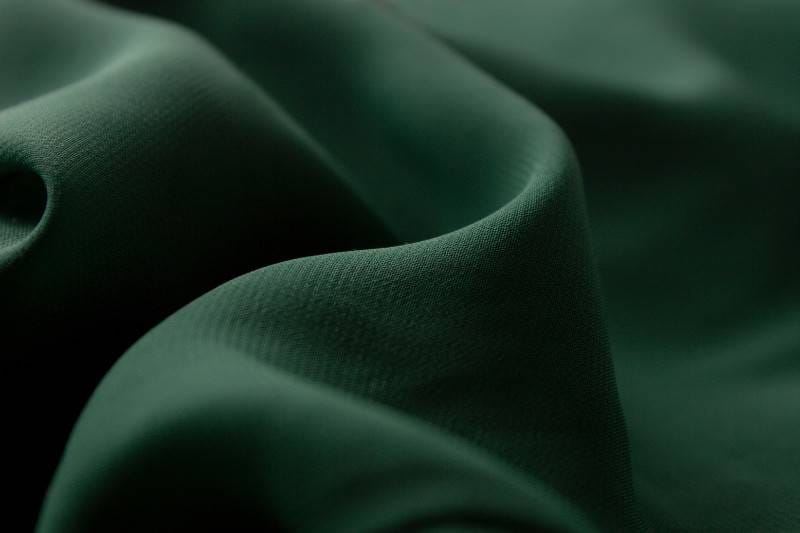
Pros of Rayon Fabric
Cons of Rayon Fabric
- Versatile Texture: Rayon offers a smooth feel, making it suitable for a variety of garments, from luxurious dresses to comfortable everyday wear.
- Highly Absorbent: Rayon’s ability to absorb moisture makes it ideal for hot and humid climates, keeping the wearer cool and comfortable.
- Breathable: The fabric allows air to pass through easily, enhancing comfort by preventing the buildup of heat and moisture.
- Drapability: Rayon drapes beautifully, making it a favorite for fashion designers seeking a fabric that flows and contours gracefully.
- Biodegradable: Being a cellulosic fiber, rayon is biodegradable, breaking down naturally over time and reducing environmental impact.
- Affordable: Compared to natural silk, rayon is more cost-effective, making luxury-feel garments accessible to a wider audience.
- Weak When Wet: Rayon fiber loses strength when wet, making it more prone to damage during washing and wear in damp conditions.
- Maintenance: Rayon garments often require gentle care, including hand washing and air drying, to maintain their structure and appearance.
- Environmental Concerns: The production of rayon, especially viscose, involves hazardous chemicals and can contribute to deforestation, raising sustainability concerns.
- Durability: Rayon fiber is generally less durable compared to other fibers like cotton, requiring more careful handling to ensure longevity.
- Shrinkage: Rayon garments are prone to shrinkage, especially when exposed to heat, necessitating careful washing and drying.
Frequently Asked Questions (FAQ)
Yes, rayon is infamous for shrinking. Because the fibers absorb so much water, they swell and then contract when drying, especially if exposed to heat. Always wash in cold water and air dry.
Pure rayon fibers are not naturally stretchy. However, rayon is often blended with Spandex or Elastane in clothing to give it the stretch required for comfort.
For comfort, yes. Rayon breathes and absorbs sweat, whereas polyester traps heat. For the environment, rayon is biodegradable while polyester is plastic-based, but rayon's chemical production is more toxic than polyester's mechanical production.
Often, yes. Many products labeled “bamboo fabric” are actually bamboo viscose, meaning bamboo is turned into cellulose pulp and then processed into viscose rayon.
Rayon is cellulose-based, so it can biodegrade under the right conditions. However, biodegradability depends on dyes, finishes, and blends (for example, rayon blended with polyester won’t biodegrade like pure cellulose fibers).
Lyocell is considered part of the rayon family because it’s also a regenerated cellulose fiber. It’s often seen as a more sustainable option due to solvent recovery in many production systems.
Conclusion
Rayon fabric is a material of contradictions. It is a versatile, semi-synthetic fiber that offers the luxury of silk for a fraction of the price.
For the GreenCitizen, the choice comes down to specifics. Avoid generic “Viscose” and “Rayon” labels, which often hide dirty manufacturing processes and deforestation. Instead, look for Lyocell, Tencel™, or Modal labels, which guarantee a cleaner, closed-loop process.
By understanding the “Rayon Reality,” we can make fabric choices that are soft on our skin and gentler on our planet.
